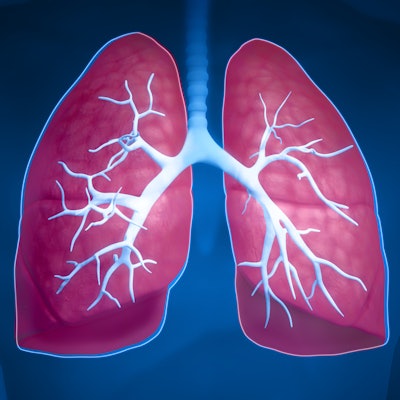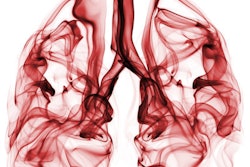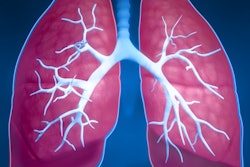
Incidental thyroid nodules on CT lung screening scans may be more common than you think, according to an analysis of data from the National Lung Screening Trial (NLST). Researchers found more nodules requiring workup than were originally reported by NLST readers.
 Dr. Manisha Bahl.
Dr. Manisha Bahl.
The reported percentage of significant thyroid nodules was 0.7%, but the true prevalence of those that required further workup was actually much higher, Bahl told AuntMinnie.com. Bahl conducted the study while a resident at Duke and is now director of the breast imaging fellowship program at Massachusetts General Hospital.
"In clinical practice, radiologists report thyroid nodules less judiciously than they would in a trial," she said. "It's more likely in clinical practice that the detected nodules will get further workup in ultrasound and biopsy, not just the significant ones."
True prevalence
Currently, there is limited research concerning incidental thyroid nodules detected on CT, according to Bahl. Large-scale CT lung cancer screening trials have reported a low incidence, yet questions remain regarding the actual prevalence of thyroid nodules and appropriate management strategies. In the NLST, for example, radiologists reading CT scans were tasked with documenting only the incidental thyroid nodules they deemed clinically significant.
"That doesn't mean that all the other subjects didn't have thyroid nodules, but it was a decision made by the radiologists whether or not to make a comment on the nodules, only if they were considered significant ... leading to variability in reporting practices among radiologists," she said.
To clarify the reporting of incidental thyroid nodules, Bahl and colleagues examined the CT scans of 17,309 NLST participants with documented thyroid abnormalities whose extrapulmonary findings were available for review. Two out of four neuroradiology fellows reviewed each CT scan for the presence or absence of thyroid nodules.
The neuroradiologists identified 663 CT scans that matched the conditions of other CT scans with reported thyroid nodules but for which the NLST readers did not report a "significant" thyroid nodule.
They found that 78 of these 663 CT scans contained a thyroid nodule, resulting in a true prevalence of 11.8% -- nearly 17 times higher than the incidence of significant thyroid nodules documented by NLST readers. There was also a statistically significant difference in the average maximal size between the nodules reported in the NLST and those left unreported (p = 0.03).
| Comparison of reported vs. unreported thyroid nodules in the NLST | ||
| Reported thyroid nodules | Unreported thyroid nodules | |
| Prevalence | 0.7% | 11.8% |
| Mean maximal diameter | 21.3 mm | 16.9 mm |
"The reported prevalence of thyroid nodules that would require further workup [in the NLST] was 0.7%, but based on our neuroradiologist readers, we think the true prevalence was closer to 12%," she said.
New workup threshold
Beyond nodule prevalence, Bahl evaluated the effect of using a series of different size thresholds to determine whether a detected thyroid nodule needed further workup.
Using a diameter of 20 mm or greater as the cutoff size would have reduced the number of nodules requiring follow-up examination, compared with the American College of Radiology (ACR) recommendation of 15 mm or greater, without missing any thyroid malignancies.
| Comparison of cutoff sizes for further workup of thyroid nodules detected on CT | ||
| Diameter of thyroid nodule | Nodules requiring workup | Malignancies detected |
| ≥ 10 mm | 79.5% | 100% |
| ≥ 15 mm | 53.8% | 100% |
| ≥ 20 mm | 30.8% | 100% |
| ≥ 25 mm | 21.8% | 81.3% |
"Ultimately, in a clinical trial setting, we could have 11.8% of patients with CT scans undergoing further evaluation of the thyroid gland and possibly a biopsy or diagnostic surgery," she said. "There's a pathway that some patients are on once an incidental thyroid nodule is detected ... some patients even get surgery because the biopsy turns out to be inconclusive."
Follow-up surveillance and treatment of incidentally detected thyroid nodules can lead to unnecessary procedures and imaging -- hiking up costs, Bahl noted. Reporting all of the incidental thyroids would make CT lung cancer screening less effective.
As new, advanced methods for increasing the efficiency of thyroid surveillance become available, such as artificial intelligence algorithms and nodule tracking services, fine-tuning the size threshold may be one of the most viable means of improving the reporting of incidental thyroid nodules.
Though Bahl has recently shifted her focus to the applications of machine learning for breast imaging, the team at Duke with which she began researching incidental thyroid nodules continues to investigate this line of work.




















